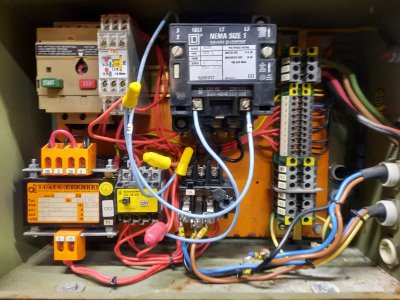Your analysis is spot on. Of course the VFD is an add-on. They started but never finished the VFD installation. I’m using the machine in a residential area so a VFD is necessary. I really want to use it as what you describe as “the wrong way.” I want it to function as designed. My Index mill does exactly that. I installed a VFD and connected it to the original barrel switch for fwd/rev/stop. I REALLY want the foot brake and clutch switch to operate as designed. If I have to choose, the foot brake is more important. At a minimum the foot brake would have to be integrated to shut down the VFD immediately. The Automation Direct VFD was much easier to configure than what I’ve seen so far with the ENC.
AI may be the “latest and greatest“ but I like hands-on control when machining.
I’m trying to understand what is technically/mechanically wrong with what you describe as “the wrong way“? My view of a VFD for this application is nothing more than to provide electricity. Is there a technical reason that it’s wrong or is it “the wrong way” because it CAN be done differently? I’m not especially interested in variable speeds. The geared head provides sufficient speed flexibility. How is giving up functionality a plus? Through the last 25 years of my career I saw lots of things getting done not because they needed to be done but because they could be done and not always because it produced the best outcome.
The coolant motor needs its own power supply (VFD) or a single phase motor. That’s a given.
AI may be the “latest and greatest“ but I like hands-on control when machining.
I’m trying to understand what is technically/mechanically wrong with what you describe as “the wrong way“? My view of a VFD for this application is nothing more than to provide electricity. Is there a technical reason that it’s wrong or is it “the wrong way” because it CAN be done differently? I’m not especially interested in variable speeds. The geared head provides sufficient speed flexibility. How is giving up functionality a plus? Through the last 25 years of my career I saw lots of things getting done not because they needed to be done but because they could be done and not always because it produced the best outcome.
The coolant motor needs its own power supply (VFD) or a single phase motor. That’s a given.
Last edited:


